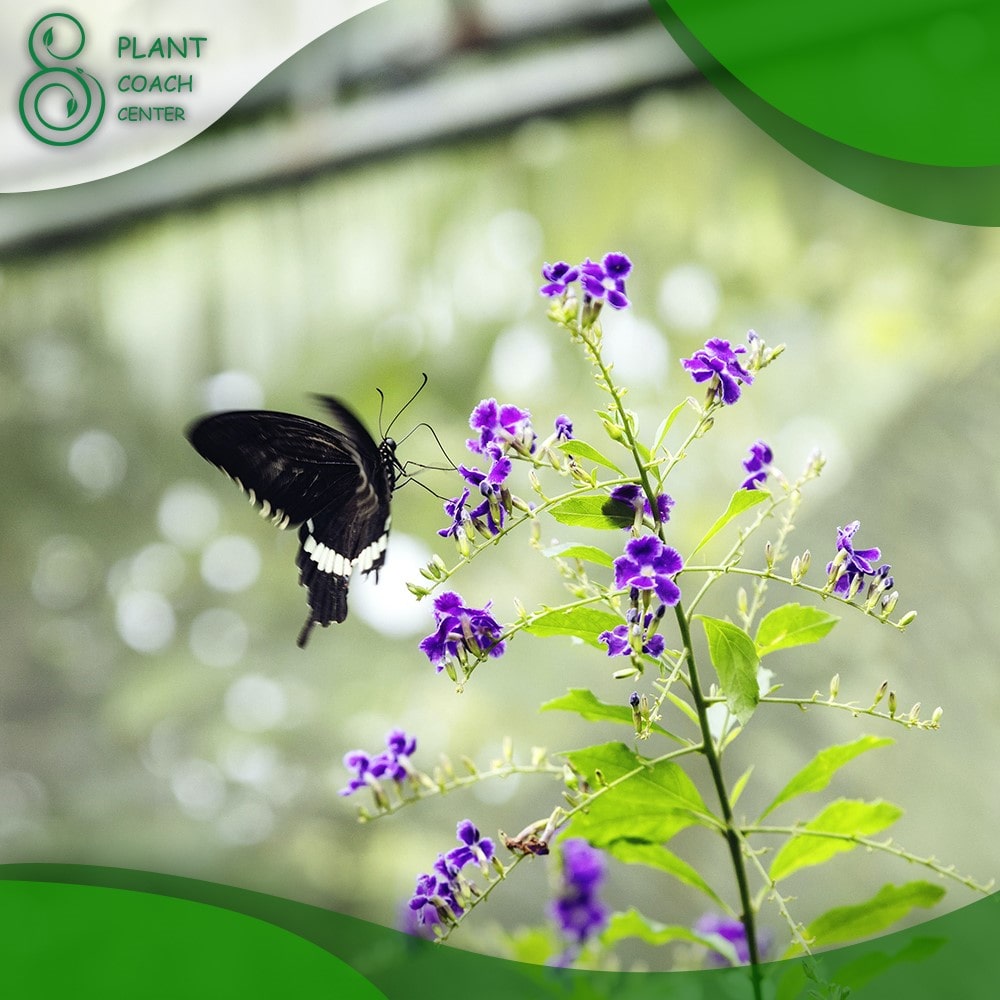When should I cut back my butterfly bush?
Welcome to the world of vibrant blooms and graceful pollinators – the realm of the butterfly bush. As any gardening enthusiast knows, cultivating a thriving garden is a harmonious dance between care and understanding.
At the heart of this delicate balance lies the question that stirs every green thumb: “When should I cut back my butterfly bush?” Like a skilled choreographer, nature provides cues and rhythms that guide our actions. In this article, we embark on a journey through the seasons, exploring the art and science of pruning these enchanting shrubs.
By deciphering the language of growth cycles, learning to read the plants’ signals, and mastering the techniques that shape their beauty, you’ll gain the confidence to be the maestro of your garden’s symphony. Whether you’re seeking to enhance your butterfly bush’s health or hope to create a haven for pollinators, join us as we unlock the secrets to perfect timing and nurturing, ensuring your butterfly bush flourishes in all its glory.
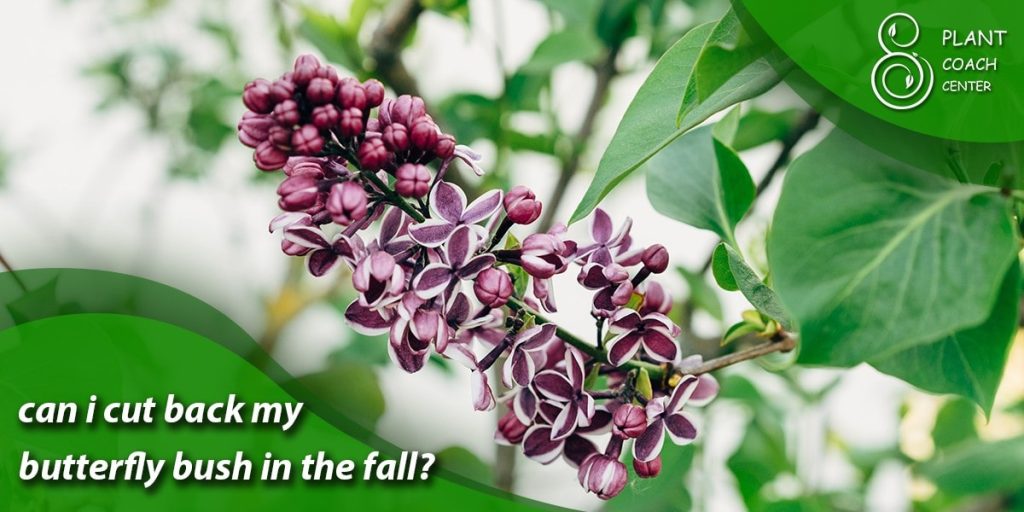
Understanding the Growth Cycle
Like the changing seasons, the butterfly bush (Buddleja spp.) follows a distinct growth cycle that guides its development throughout the year. Understanding this natural rhythm is essential for knowing when to cut back your plant for optimal health and vitality.
Winter Slumber
As winter sets in, the butterfly bush enters a period of dormancy. Its above-ground growth slows down, and the plant’s energy is redirected to its roots, where it stores resources for the coming burst of growth. This is when the plant conserves energy, and its focus shifts inward.
Signs of Life
With the arrival of spring, the butterfly bush awakens from its slumber. The first signs of growth include the emergence of new shoots and the development of fresh leaves. During this phase, the plant is vulnerable to late frosts, so it’s crucial to wait until frost has passed before pruning.
Full Swing
As summer takes hold, the butterfly bush shifts into high gear. This peak blooming period is characterized by vibrant and fragrant blossoms that attract pollinators, particularly butterflies. It’s best to avoid significant pruning during this phase, as it could disrupt the plant’s ability to produce flowers and attract beneficial insects.
Late Summer
Toward the end of summer, the initial burst of flowering begins to wane. You might notice spent blooms and a gradual decline in the plant’s overall vigor. This signals that the butterfly bush is nearing the end of its active growth phase and transitioning into a more restful state.
Fall Preparations
As autumn approaches, the butterfly bush winds down its growth activities. During this period, the plant shifts its focus back to the roots, absorbing nutrients from the foliage before the leaves drop. This is also an opportune time to evaluate the plant’s overall structure and decide on the extent of pruning needed to shape it for the following year.
Best Time for Pruning
Just as a skilled conductor orchestrates a symphony, a gardener must tune in to the seasonal melodies that guide the timing of pruning for the butterfly bush. Each season offers a distinct window of opportunity, and understanding these nuances will allow you to wield your pruning shears with precision and finesse.
Late Winter to Early Spring
As the first hints of spring begin to thaw the winter chill, late winter to early spring emerges as a prime time for pruning the butterfly bush. The plant is still dormant during this period, but its readiness to awaken is palpable. Pruning in late winter allows you to shape the plant before new growth emerges, promoting a balanced structure and robust flowering.
Early Summer
After the initial burst of summer blooms has faded, early summer provides another window for light pruning. This is a time to remove spent flowers and dead or diseased wood. By doing so, you not only tidy up the plant’s appearance but also redirect its energy toward producing new growth and potentially encouraging a second round of flowering later in the season.
Late Summer to Early Fall
As the summer season begins to wane and the butterfly bush’s growth slows down, late summer to early fall presents an opportunity for more comprehensive pruning. You can substantially shape during this period, removing overly long or crossing branches to maintain a healthy structure. However, be mindful of pruning early into fall, as new growth might need more time to harden before the colder months.
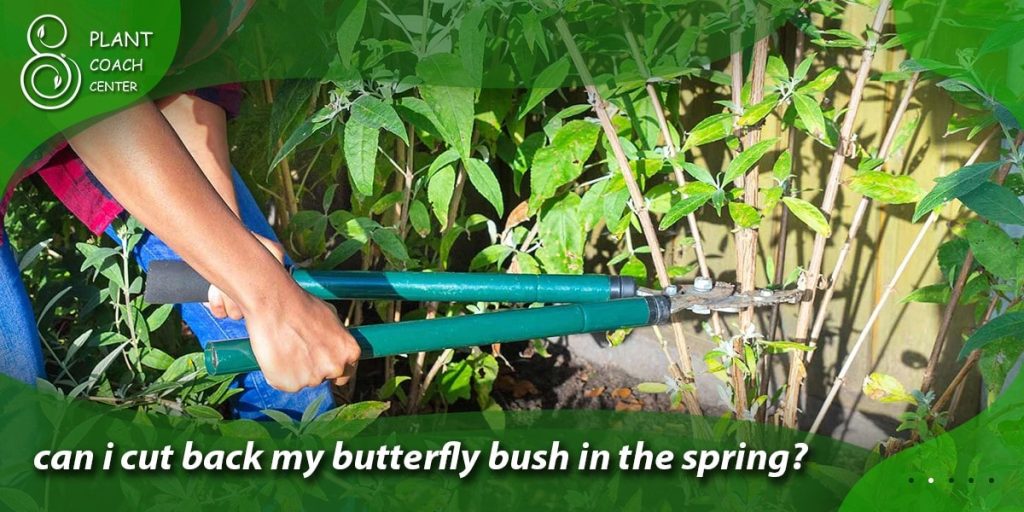
Indicators for Pruning
Nature has a way of communicating its needs, and the butterfly bush is no exception. Learning to read the signs that this plant offers can provide valuable insights into when it’s time to pick up those pruning shears. From subtle shifts in color to changes in growth patterns, here are the indicators that will help you decipher the language of your butterfly bush.
Faded Blooms and Spent Flowers
One of the most telling signs that your butterfly bush might need pruning is the presence of faded blooms and spent flowers. As these blossoms lose their vibrancy and droop, they signal that the plant has completed its reproductive cycle for that particular bloom. Snipping off these spent flowers keeps the plant looking tidy and encourages it to allocate resources toward new growth and future blooms.
Yellowing or Discolored Leaves
Yellowing or discolored leaves can indicate various issues, including nutrient deficiencies, disease, or inadequate sunlight. However, if you notice that only a few leaves are affected, and the rest of the plant looks healthy, it might be a good opportunity for selective pruning. Removing these compromised leaves can improve the overall appearance of the plant and prevent potential disease spread.
Leggy Growth and Overcrowding
If your butterfly bush displays leggy growth – long, thin stems with sparse foliage – it might indicate that it’s not receiving enough sunlight. Pruning back leggy growth can promote bushier, more compact development and better light distribution throughout the plant. Similarly, if you observe overcrowded branches competing for space, carefully thinning out some congested areas can improve air circulation and overall plant health.
Encroaching on Other Plants
Plants, like good neighbors, respect each other’s space. If you find your butterfly bush extending its branches into the territory of other plants, it’s a cue to prune back these intrusive growths. This prevents crowding and potential shading of neighboring plants and maintains a harmonious garden layout.
Crossing and Rubbing Branches
As branches grow, they can sometimes cross or rub against each other. This friction can create wounds that serve as entry points for pests and diseases. Inspect your butterfly bush regularly and trim away branches crossing or rubbing against each other to promote a healthier plant structure.
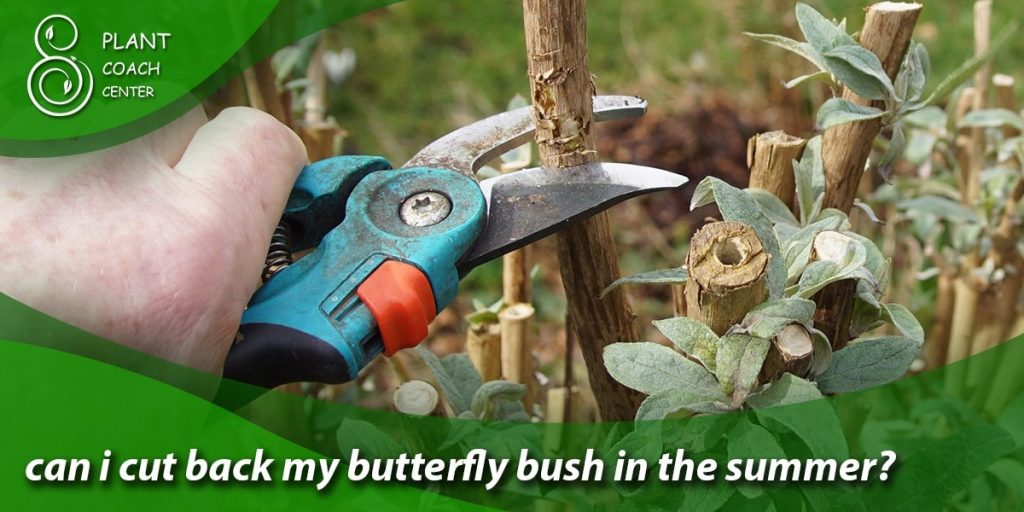
Tailoring Your Approach
The world of butterfly bushes is diverse, with various species and cultivars that exhibit unique growth habits and characteristics. Understanding the specific attributes of your chosen butterfly bush species is critical to tailoring your pruning approach for maximum impact. Take a closer look at a few prominent species and how to best care for them through strategic pruning.
The Classic Butterfly Bush
The Buddleja davidii species is the most well-known among butterfly bushes. With its long, arching branches and prolific clusters of flowers, it’s a favorite among gardeners and pollinators alike. Pruning this species involves cutting back the previous year’s growth in late winter or early spring, leaving about one-third of the plant’s height. This encourages new growth and maintains a manageable size, ensuring an abundant display of blooms.
The Fountain Butterfly Bush
Known for its unique weeping habit, the Buddleja alternifolia requires a different approach. This species blooms on old wood, meaning that pruning should be done immediately after flowering in early summer. Remove spent flowers and shape the plant as needed, but avoid heavy pruning, which can reduce the following year’s flowering potential.
The Orange Ball Tree
Buddleja globosa stands out with its spherical clusters of orange flowers. Light pruning is recommended in late winter to early spring to maintain the natural shape and abundant flowering. Remove any dead or weak growth and shape the plant as necessary, focusing on strengthening its compact and rounded form.
The Lilac Butterfly Bush
With its elegant lilac flowers and graceful arching branches, Buddleja lindleyana adds a touch of sophistication to any garden. Prune this species right after flowering to maintain its shape and encourage new growth. Lightly cut back spent blooms and overcrowded or crossing branches to promote a healthy and well-structured plant.
The Honeycomb Butterfly Bush
This hybrid butterfly bush combines the best of its parent species. Pruning should be approached similarly to Buddleja davidii, with light to moderate pruning in late winter or early spring. Remove old growth to allow new shoots and ensure a vigorous bloom cycle.
Shaping for Beauty and Purpose
Pruning is an art that goes beyond simply trimming branches; it’s about sculpting your butterfly bush to achieve aesthetic beauty and functional health. Understanding the different pruning techniques and when to apply them will empower you to shape your plant with finesse, ensuring it thrives as a stunning centerpiece in your garden.
A Fresh Start
Rejuvenation pruning can be a transformative solution when a butterfly bush becomes overgrown, straggly, or laden with old wood. Best performed during the late winter or early spring, this technique involves cutting the entire plant back within a foot or so of the ground. While this may seem drastic, it encourages vigorous new growth from the base and revitalizes the plant’s overall appearance.
Refining the Structure
Selective pruning is a delicate technique that involves targeted removal of specific branches to enhance the plant’s structure and aesthetics. Use this approach to eliminate any dead, diseased, or crossing branches and thin out overcrowded areas. By promoting good air circulation and sunlight penetration, selective pruning ensures the plant’s health and allows it to allocate resources effectively.
Encouraging Continuous Blooms
Deadheading involves removing spent flowers to stimulate the growth of new blooms. This technique keeps your butterfly bush looking tidy and redirects the plant’s energy from seed production to additional flowering. Regular deadheading throughout the blooming season – particularly for species that bloom on new wood – can result in a prolonged and vibrant display of blossoms.
Creating a Compact Shape
Pinching is an effective technique for young butterfly bushes or species that tend to grow leggy. As new growth emerges, pinch off the tips of the shoots with your fingers or pruning shears. This encourages branching and results in a bushier, more compact plant. Continue pinching regularly during the growing season to maintain the desired shape.
Crafting an Artful Form
Structural pruning is your ally if you’re aiming for a specific architectural shape or form. Whether it’s an elegant pyramid, a rounded mound, or a graceful arching habit, this technique carefully shapes the plant over time by trimming specific branches. Structural pruning requires a long-term vision, patience, and a keen eye for balance and proportion.
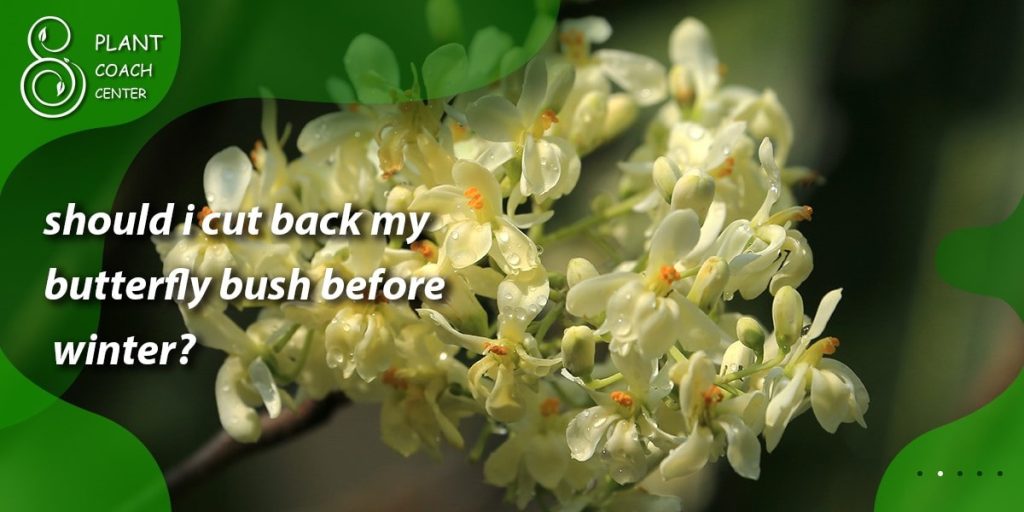
Balancing Timing and Biodiversity
Your butterfly bush isn’t just a visual delight but a vital resource for pollinators like butterflies, bees, and hummingbirds. As you consider when and how to prune, it’s essential to balance your gardening goals and the needs of these valuable visitors. By aligning your pruning timing with pollinator activity and maintaining a diverse garden ecosystem, you can create a haven that benefits your plants and the creatures that rely on them.
Pruning and Pollinator Seasons
Pollinators rely on nectar and pollen as their primary sources of sustenance. When planning your pruning, aim to avoid disrupting their foraging activities. Pollinator activity is generally highest during the warmer months, especially in mid to late spring and early summer. Consider delaying significant pruning efforts during these periods to provide your winged visitors a continuous supply of nectar-rich blooms.
Providing Pollinator Resources
When pruning for plant health and shape, opt for a “thinning” approach rather than a complete “clear-cut.” Thinning involves selectively removing a portion of branches to open up the plant’s structure without removing all the flowers. This way, you’ll maintain a source of nectar for pollinators while still achieving your pruning goals.
Companion Planting
Consider companion planting to ensure that pollinators have access to nourishment even during and after pruning. Select flowers that bloom at different times or are in their prime when your butterfly bush is being pruned. This way, your garden will provide a continuous food supply, enhancing pollinators’ overall habitat.
Beyond the Butterfly Bush
While the butterfly bush is a fantastic pollinator attractant, a diverse array of plants ensures a well-rounded and sustainable pollinator habitat. Incorporate native plants, flowering herbs, and various shrubs and trees that offer nectar, pollen, and shelter. This approach supports pollinators and encourages a balanced ecosystem that benefits all garden inhabitants.
Flexibility in Pruning
Gardening is a dynamic practice; sometimes, pollinator needs might override a strict pruning schedule. If you notice unusually high pollinators visiting your butterfly bush during a particular period, consider postponing pruning until their activity subsides. Adaptability is critical in ensuring your garden remains a nurturing space for plants and pollinators.
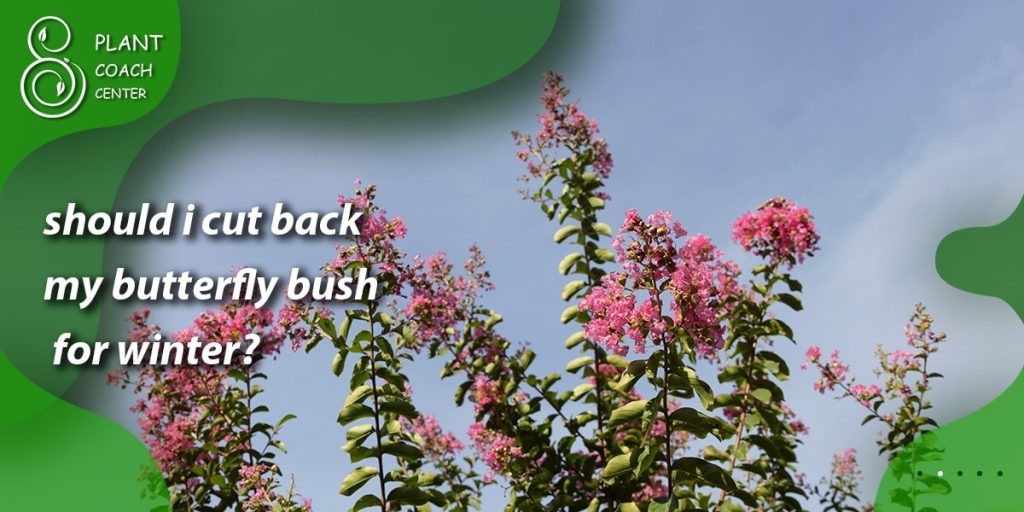
A Pruning Pitfall Guide
Pruning is a beneficial practice and can quickly become a misadventure if not approached with care and knowledge. Avoid these common pitfalls to ensure that your efforts contribute to your butterfly bush’s health, aesthetics, and longevity.
Less Isn’t Always More
One of the most prevalent mistakes is excessive pruning. Removing too much growth at once can stress the plant, hinder its ability to produce energy through photosynthesis, and even diminish its flowering potential. Stick to the general rule of never removing more than one-third of the plant’s total growth in a single pruning session.
Disrupting the Natural Rhythm
Timing is everything in the world of pruning. Pruning at the wrong time – such as during active flowering or too late in the fall – can impact the following year’s blooms and overall growth. Familiarize yourself with your specific butterfly bush species and its growth cycle to determine the ideal times for pruning.
Dull Blades and Dirty Shears
Pruning with dull blades can cause ragged cuts that take longer to heal and are more susceptible to disease. Additionally, dirty pruning shears can spread pathogens from one plant to another. Keep your tools sharp and clean by regularly sanitizing them and sharpening their blades.
A Recipe for Spread
Pruning offers an opportunity to remove diseased or infected branches before they can spread further. Failing to identify and remove these branches can compromise the overall health of your butterfly bush and potentially affect nearby plants. Always inspect your plant for signs of disease and promptly remove any affected parts.
Neglecting to Assess Growth Patterns
Pruning should be a thoughtful endeavor. Only snipping away branches with consideration of the plant’s natural growth pattern and structure can lead to imbalanced growth, poor aesthetics, and an increased risk of disease. Take the time to assess your plant’s growth and shape before making any cuts.
Avoiding Sudden Shocks
Rejuvenation pruning, while effective, can shock the plant if done too drastically. Completely cutting back an overgrown butterfly bush might lead to stress and slow recovery. Instead, consider gradual rejuvenation over a few seasons to minimize the plant’s shock and allow it to adapt.
Affecting Wildlife
While it’s tempting to prune for a manicured look, remember that butterfly bushes play a crucial role in supporting pollinators. Avoid pruning during peak pollinator activity, and always leave some flowers behind to provide nectar sources for these critical creatures.
Conclusion
In the delicate dance between cultivation and nature, mastering the art of pruning your butterfly bush is a symphony of timing, technique, and empathy for the ecosystem. From understanding growth cycles to tailoring your approach for different species, each decision you make shapes the vibrant canvas of your garden. Balancing the needs of your plants with the pollinators they attract underscores the true essence of responsible gardening. You embark on a journey of nurturing life and aesthetics in tandem by sidestepping common pruning pitfalls and embracing the wisdom shared here.
As you wield your pruning shears, remember that your efforts contribute to the beauty of your butterfly bush and the vitality of your outdoor haven. For more insightful gardening tips and inspiration, visit PlantCouchCenter.com, where the world of green wonders awaits your exploration.
When is the best time to prune my butterfly bush?
Late winter or early spring.
How do I rejuvenate an overgrown butterfly bush?
Gradually trim back over a few seasons.
Can I prune during peak pollinator activity?
Avoid pruning during active pollination to support wildlife.


